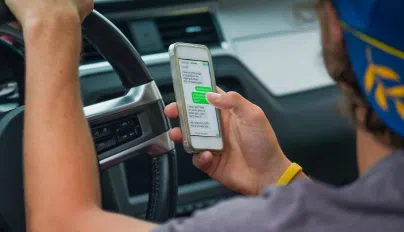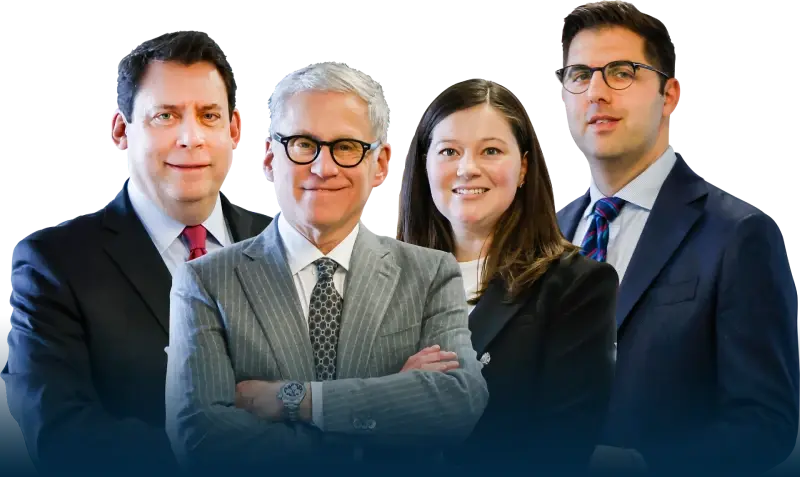Distracted driving is on the rise. Here in the smartphone era, texting while driving has quickly gone from “what’s that?” fifteen years ago to one of the leading causes of death today. This is particularly true for teenagers, who are dying in record numbers because of distracted driving — an utterly preventable tragedy.
Fortunately, not all distracted driving accidents are deadly, but many more cause significant injuries. If you’ve been injured in a car crash in New York, you might suspect that the other driver was using their cell phone (or was otherwise distracted). After all, statistics tell us that isn’t unlikely.
But how to prove the other driver was distracted during the accident?
You might be surprised to learn there are now a number of ways to prove a driver was distracted or texting at the time of the crash. Law enforcement, law firms, and courts of law have more or less “gotten up to speed” on the issue of distracted driving.
if you suspect a nearby driver is distracted, what should be your first response?
Below, we look at several ways to prove a driver was distracted when they hit you. While it may not always be possible to prove conclusively, accident victims are often able to bolster their claims using these types of evidence.
Were you injured by a distracted driver? See if you have a case
Our car accident lawyers are standing by to help.
First and Foremost: You Can Play an Important Role at the Scene of the Crash
There is no better time to gather evidence of distracted driving than at the scene of the crash.
If you are able, look around for any evidence of distracted driving (especially if you saw the driver texting or engaging in distractions).
For example, you might look for a cell phone still in the driver’s hands, or in the seat beside them with the screen still turned on.
Of course, phones aren’t the only type of distraction. You might also look for signs of eating while driving, rummaging through a bag, applying makeup, or otherwise taking focus off the road.
If you see any such evidence, take photographs or video if at all possible.
That said, please never put yourself in danger for the sake of gathering evidence. If you are injured, don’t risk making the injury worse by attempting to explore the scene. If you can’t gather evidence yourself, you might ask someone nearby to take photographs for you.
Cell Phone Records (and the Cell Phone Itself)
If the person was talking on the phone or sending SMS text messages at the time of the crash, it may be possible to subpoena cell phone records that will show the exact time and date of the activity.
Likewise, the phone itself may contain all the evidence you need to prove the other driver was distracted. Police officers will sometimes inspect a driver’s phone at the scene or even confiscate it as evidence, depending on the circumstances.
Social Media Activity / Electronic Trail
Cell phone records won’t capture all smartphone activity. Encrypted instant messaging apps, social media platforms, email messaging, web browsing, and other activities don’t necessarily register in the phone logs. However, many of these activities do leave an electronic trail.
If the person was using social media at the time of the crash, for example, that activity might be logged and timestamped online.
In some cases, it may be possible to hire an expert to investigate the at-fault driver’s metadata and/or electronic trail as it pertains to the crash, though whether this is a step worth taking will depend on the nature of your claim and the factual circumstances surrounding the crash.
Vehicle Data
The question of how to prove the other driver was distracted during the accident will sometimes lead us directly to his or her dash board.
Many newer vehicles include sophisticated computer equipment that monitors and records a driver’s activity behind the wheel. There may be a computer record of how fast the car was going, for example, or even whether the driver was adjusting the car’s radio (or other electronic controls) at the time of the crash.
Witness Testimony
One of the best ways to prove a driver was distracted or texting when they hit you is through eyewitness testimony. Witnesses might include:
- Your passengers
- The other driver’s passengers
- Passersby / pedestrians in the vicinity of the crash
- People in other vehicles
Police Report
Law enforcement officers will sometimes include notes about distracted driving in the official police report, which may provide compelling evidence in support of your claim. Examples include:
- The officer’s own observations of distracted driving (or evidence suggesting distraction)
- The at-fault driver’s own statement to the officer, admitting they were texting or distracted (which happens more often than you might think)
- Statements from other drivers, passengers, pedestrians, or witnesses
- What the officer found on the driver’s cell phone (if the officer inspected or confiscated the phone at the scene)
Accident Reconstruction Specialists
As Manhattan and White Plains car accident lawyers, we sometimes hire outside accident reconstruction specialists, who can investigate the accident and create a compelling demonstration of how it happened.
There may be, for example, tire mark patterns, debris, or other forensic evidence that suggest driver distraction (or perhaps indicate that the driver’s response or lack thereof was consistent with someone who was distracted). This evidence may help to strengthen your claim and improve your leverage during negotiations with the insurance company.
Traffic Camera Recordings / Surveillance Footage
In today’s world, video surveillance is a constant, especially in large metropolitan areas like White Plains and Manhattan. From traffic cameras to police car cameras, body cameras, cell phone footage, and security surveillance from nearby businesses, distracted drivers often end up “caught on camera” without realizing it.
As Manhattan & White Plains auto accident lawyers, when considering how to prove the other driver was distracted during the accident, we will often travel out to the place where the collision occurred to look for any possible source of video footage or photography.
Free and Confidential Consultation with our New York Distracted Driving Attorneys
If you’ve been injured in a car crash and you suspect distracted driving is to blame, don’t assume you don’t have evidence. Contact our experienced New York car accident lawyers and talk about ways to prove a driver was distracted or texting when they hit you, as well as any options you might have.
Lever & Ecker, PLLC is a New York personal injury firm with years of experience in helping auto accident victims, and their families claim the financial justice they deserve.
We will not charge a fee for our services unless and until we get you money. Your initial consultation is free and confidential, with no obligations whatsoever.
Time limits do apply to New York auto accident claims, so please don’t delay. To get started, call one of our convenient office locations:
- White Plains – (914) 288-9191
- Bronx Office – (718) 933-3632
- Queens Office – (347) 391-6337
Or contact us online by filling out our contact form. We are available 24/7!


